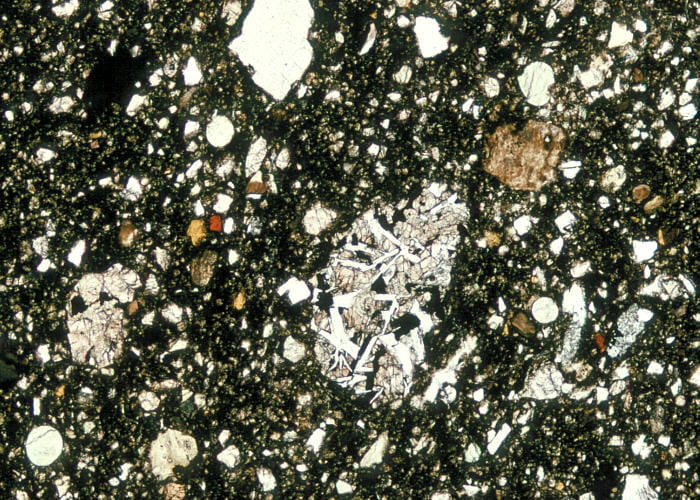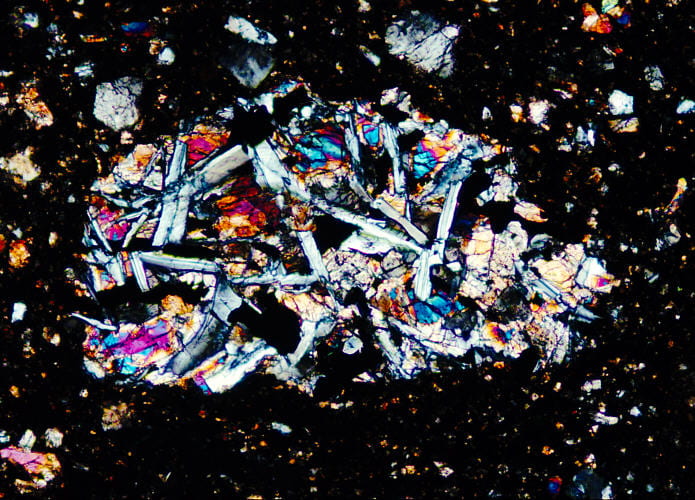Lunar thin section 15299
This sample of regolith breccia was collected by the Apollo 15 mission, which landed in the Apennine Mountains, part of the ejecta rim of Mare Imbrium. This site was within sight of the Hadley Rille, a sinuous valley that is interpreted to be a collapsed lava tube.
|
This breccia has a variety of fragments that include anorthosite and basalt, orange glass spheres and sphere fragments, green glass spheres and fragments (colorless, hard to distinguish), and monominerallic fragments in a dark brown glassy matrix. Dark blobs may be relic agglutinates, which distinguish this as a regolith breccia. The larger feldspathic and basalt fragments are visible here. The feldspathic fragment on the far left-center is anorthosite breccia. The grain in the center of the lower right quadrant is a basalt. Field width is 8 mm. Views in plane- and cross-polarized light. |
|
|
Large grayish grain on the right is a highly reworked anorthositic breccia. The grain on the far left appears to be anorthositic. also. In cross-polarized light it can be seen that the right fragment has a small proportion of olivine or pyroxene, probably <10%. The grain on the far left has isotropic regions that are maskelynite. Field width is 4 mm. Views in plane- and cross-polarized light. |
|
|
Closer view of the largest basalt fragment in this breccia, near center, and a smaller basalt fragment to the left. Orange glass fragments are visible, as are at least four sizable green glass spheres are visible scattered about (colorless to faint green and round). In cross-polarized light the larger feldspathic grain at the top appears to be a partially annealed feldspathic breccia. Field width is 4 mm. Views in plane- and cross-polarized light. |
|
|
Close-up view of the larger basalt fragment in the view immediately above, that shows a bit better the dark brown, glassy breccia matrix. No olivine is present in this grain, only plagioclase, pyroxene, and opaques. Field width is 1.6 mm. Views in plane- and cross-polarized light. |








